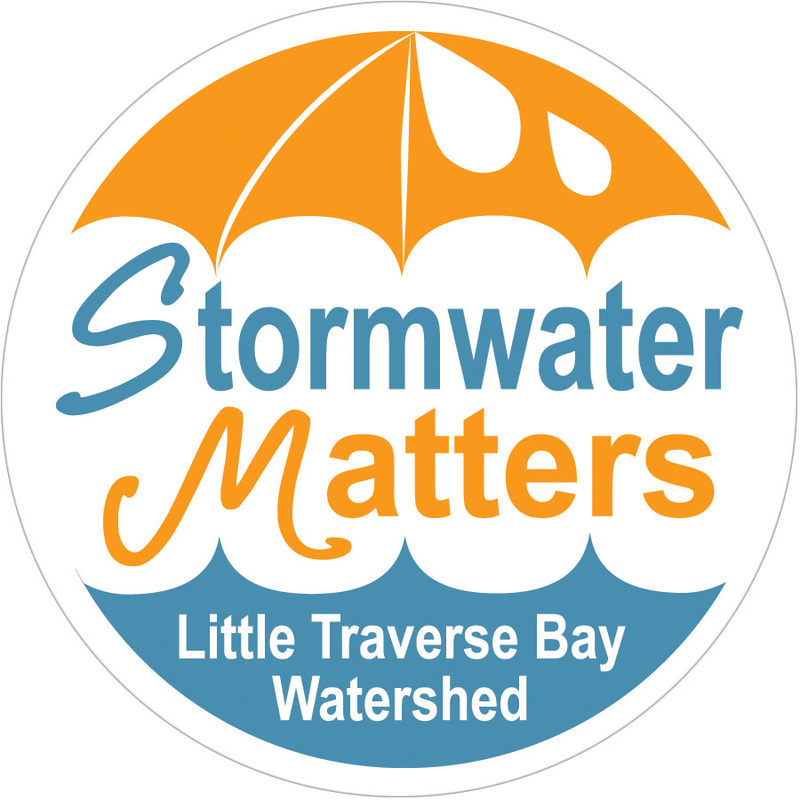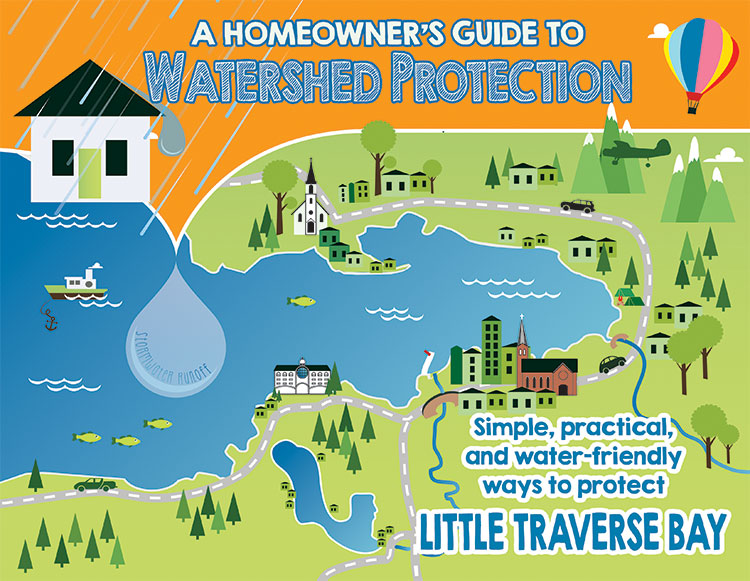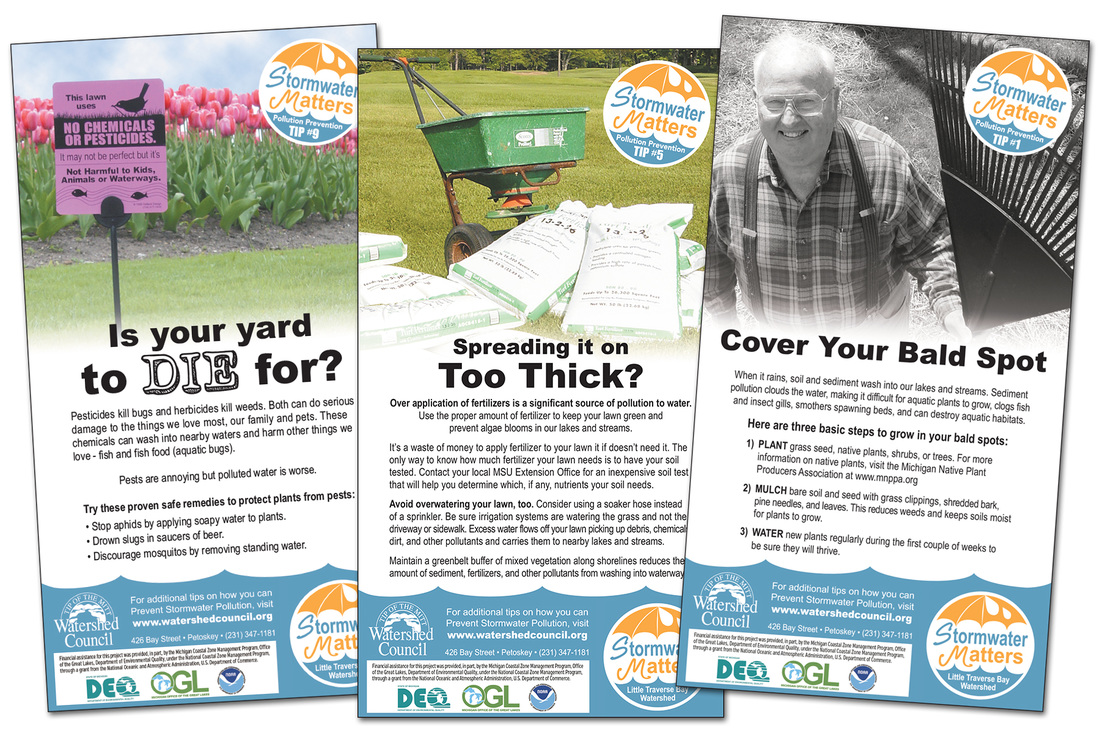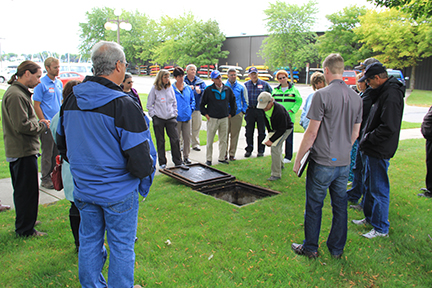For centuries, the Little Traverse Bay Watershed, which includes Walloon Lake, the Bear River and its tributaries, Tannery Creek, and over 174 square miles of land both north and south of the Bay itself, has drawn people to the area for a variety of reasons. The Watershed’s abundance of natural resources, and ease of harvesting and transporting them, made the area’s economy flourish in the late 1800’s. The Bear River served as a convenient waterway for transporting logs to the Bay where large ships waited to take them to points all along the Great Lakes. Limestone and shale along the south shore of the Bay supported cement manufacturing and the Bay provided plentiful whitefish and lake trout. In addition to the industrial and extractive uses, the natural beauty of Little Traverse Bay also attracted visitors from across the country. By the time Michigan became a state, well over 100 years of fur trading, resource extraction and development had already taken its toll on the Watershed.

Ironically, the water resources that continue to enrich the area are still threatened; overdevelopment, invasive species, and pollution from stormwater runoff are just a few of the threats they face today. The balance of supporting the local economy while preventing resource degradation is an ongoing challenge.
Fortunately, there are many ways we, as individuals and as a community, can help protect the water quality of Little Traverse Bay for years to come. Controlling stormwater runoff at our residences, businesses, schools, and other built environments, is one way. Stormwater runoff is generated when precipitation from rain and snowmelt flows over land or impervious surfaces (paved streets, parking lots, and building rooftops) and does not soak into the ground. Along the way, stormwater picks up nonpoint source pollutants: natural and human-made pollutants, such as nutrients from fertilizers, sediment from eroding soils, and grease and metals from street surfaces, and deposits them into nearby lakes, rivers and wetlands. Unlike waste water, stormwater runoff in the Little Traverse Bay Watershed does not receive treatment, as storm and sanitary sewers are separate.
Nonpoint source pollutants can have harmful effects on drinking water supplies, recreation, fisheries and wildlife. Accordingly, the Little Traverse Bay Watershed Protection Plan (Plan), a watershed management plan prepared by the Little Traverse Bay Watershed Advisory Committee, identifies nutrients and sediments as the most serious nonpoint source pollutant threat to the Watershed’s surface waters. In an effort to mitigate this ongoing threat, Tip of the Mitt Watershed Council is providing stormwater education and management resources to the community through our grant-funded Little Traverse Bay Watershed: Stormwater Matters program. Funding for the program is provided by the Michigan Coastal Zone Management Program, Office of the Great Lakes, Department of Environmental Quality and the National Oceanic and Atmospheric Administration.
Little Traverse Bay Watershed: Stormwater Matters grant includes the following components:
Low Impact Development (LID) Workshop
On May 1, 2015 the Watershed Council hosted a Low-Impact Development (LID) seminar for engineers, architects, landscape architects, and other affiliated professions. Leading stormwater management experts presented the all-day program, which included a wealth of information regarding LID techniques, economics, and case studies. The seminar was video recorded and is available on our YouTube Channel.

Stormwater Management Guide
“A Homeowner’s Guide to Watershed Protection: Simple, Practical, and Water-Friendly Ways to Protect Little Traverse Bay” was written and published in the summer of 2015. This free, 24-page booklet features a variety of stormwater management techniques. Copies are available at the Watershed Council office while supplies last.
Stormwater Matters Advertisement Series
Watch for our “Stormwater Tips” featured every other week in both the Harbor Light and Petoskey News Review. There are 12 messages in the series promoting simple things homeowners can do to prevent polluted stormwater from enter our waterways. These tips are also listed on our website’s Stormwater page.


Stormwater Management Tour
In August 2015, the Watershed Council hosted a Watershed Protection Tour for local government officials. The tour included visiting the Little Traverse Bay Watershed’s water resource highlights while emphasizing the best management practices needed for water quality protection.
As residents, business owners, and visitors of the Little Traverse Bay Watershed, you know how lucky we are to have a such amazing water resources so close at hand. But luck has nothing to do with water quality. Good water quality depends on the actions of the watershed community. So let’s keep up the good work and be mindful of our individual and collective runoff, because when it comes to Little Traverse Bay and its watershed, stormwater really does matter.

